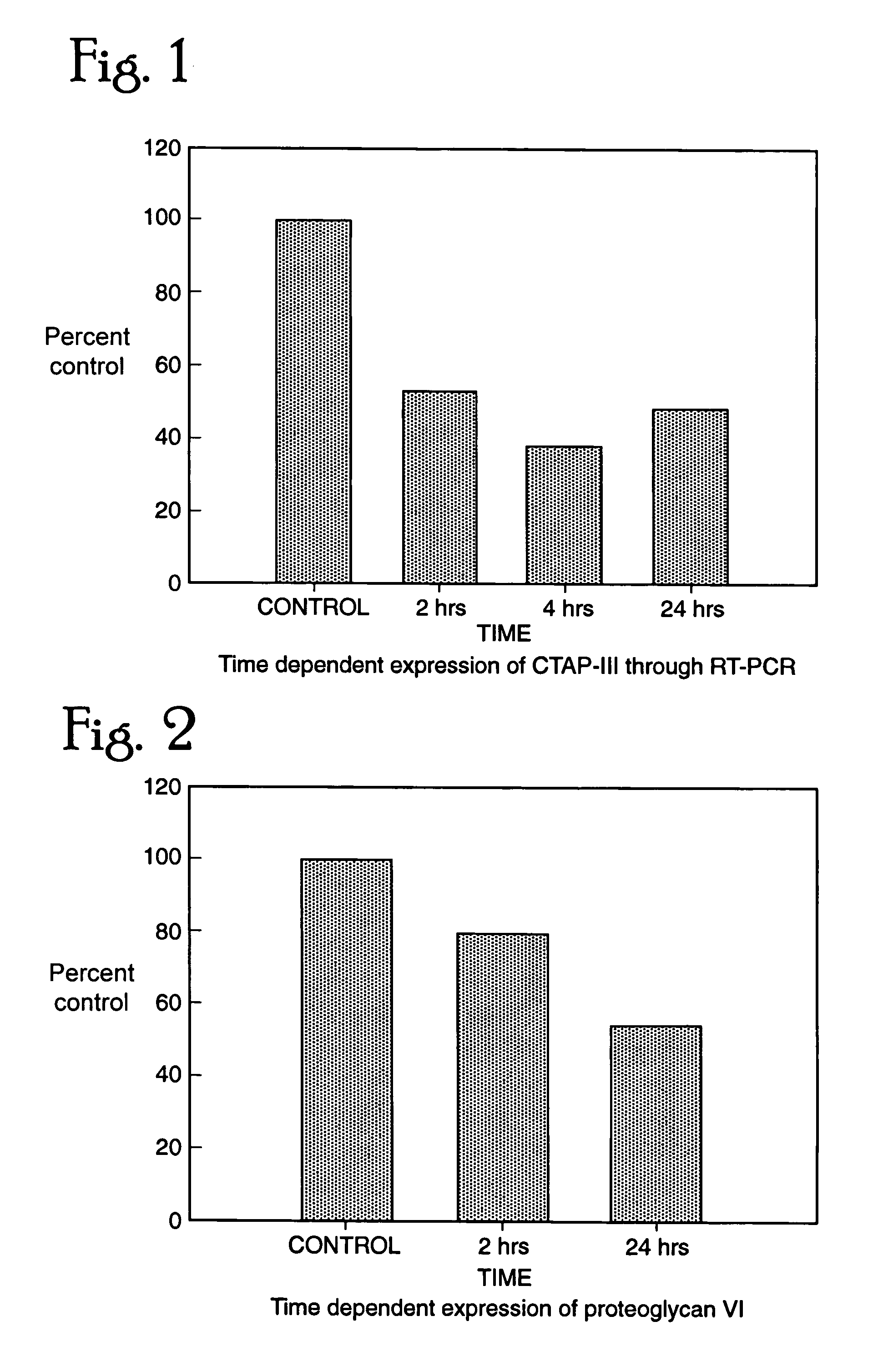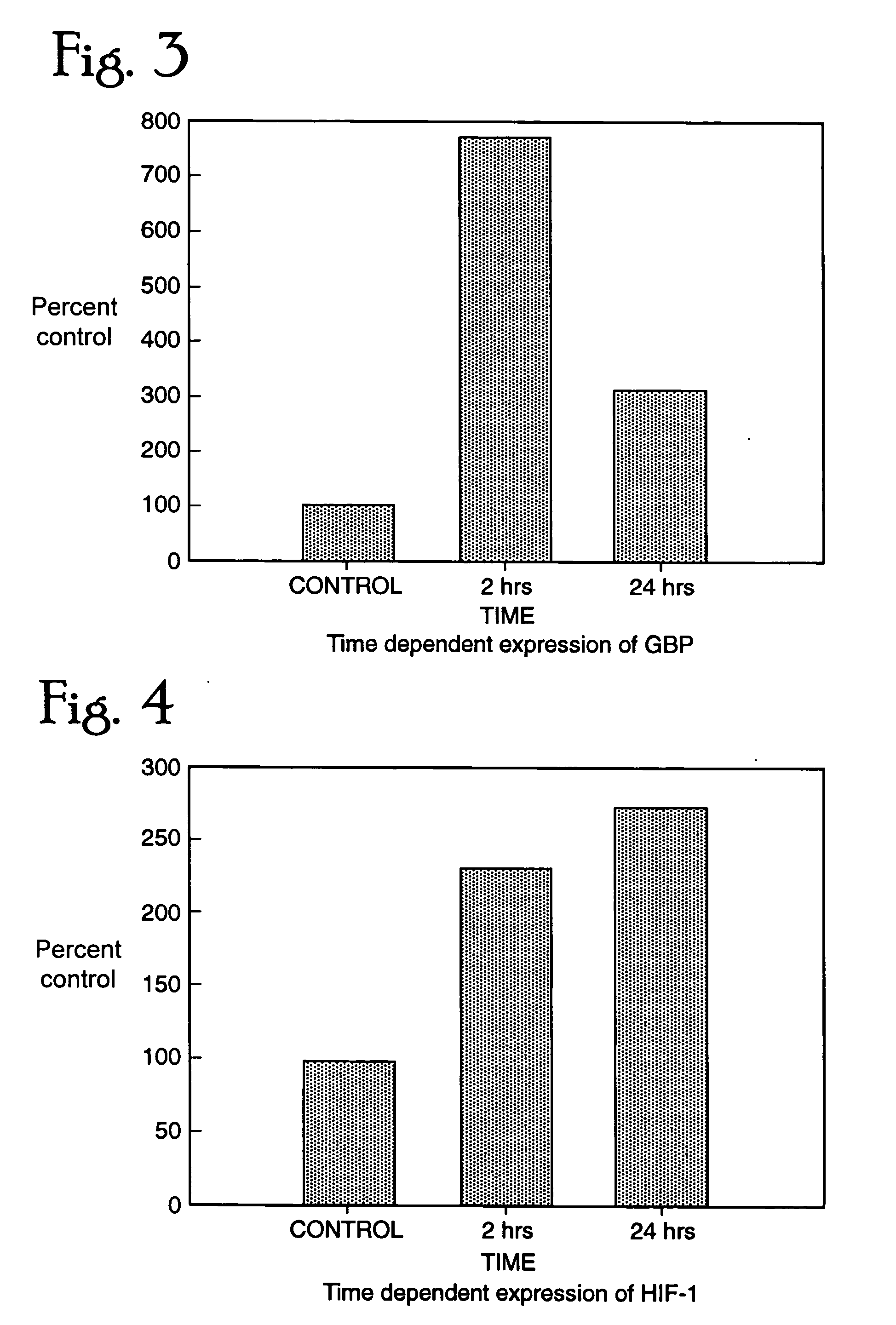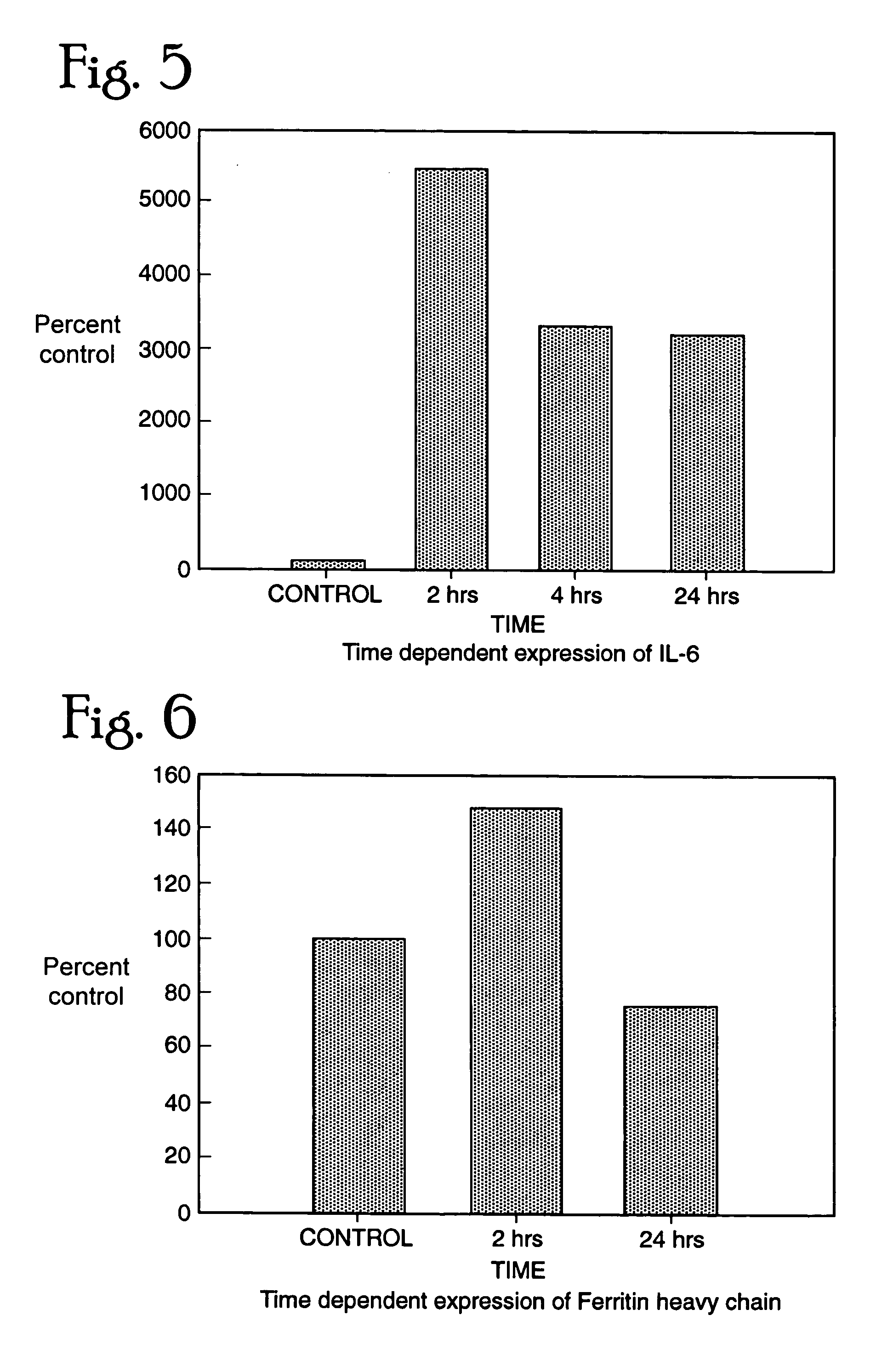Method of treating lethal shock induced by toxic agents and diagnosing exposure to toxic agents by measuring distinct pattern in the levels of expression of specific genes
a technology of toxic agents and genes, applied in the field of lethal shock treatment, can solve the problems of ineffective detection methods, complicated identification of toxins or infectious agents, and toxic at undetectable levels, and achieve the effect of reducing expression
- Summary
- Abstract
- Description
- Claims
- Application Information
AI Technical Summary
Benefits of technology
Problems solved by technology
Method used
Image
Examples
example 1
[0235] We exposed several rhesus monkeys with a sublethal dose of SEB (12-24 ug / kg cumulative via aerosol) and the controls with a saline challenge, isolated blood cells and prepared RNA from them. RT-PCR was performed for three separate genes that were altered in response to SEB in human lymphocytes. IL6 showed an increase over the control monkey samples suggesting that this cytokine does play a crucial role in SEB induced toxicity (FIG. 7). We further analyzed the levels of CTAP and GBP and found both the genes to be up regulated in 30 min after exposure to SEB (FIG. 8, 9). This confirms the data we observed in vitro with human lymphoid cells. These genes can be thus be used as markers for exposure to SEB in a time dependent manner.
Differences in Responses in SEB and LPS Exposed Cells
Comparison of Changes in Gene Expression in SEB and LPS Induced Lymphoid Cells:
[0236] When genes identified by DDPCR were analyzed and compared in two different toxins, we found there were some di...
example 2
[0251] In this example, lymphoid cells are treated with pathogens / toxins: 2, 6, 16 hr exposure; RNA is isolated. Lymphoid cells are exposed to various BW agents for defined time periods and RNA free of genomic DNA is isolated using trizol method. Enough human lymphoid cells are started to isolate RNA at all the time points for each BW agent. This RNA is used for screening of changes in gene expression pattern by several methods.
example 3
[0252] In this example, DD-PCR, + / − SAGE or Gene Array is used to isolate altered genes, purify, and amplify. DD-PCR is performed using various combinations of anchored and arbitary primers to cover the entire cDNA population. The DD-PCR products are resolved on a sequencing gel and changes for each agent analyzed. An example of this is shown in Table 1a. (Table 1a is a table describing the number of genes altered with each primer combination using DD-PCR with SEB treated cells.) At each step proper negative (reaction minus RT products, etc) and positive controls (supplied RNA from manufacturer) are used and samples are handled in duplicates to avoid false signals. Genes are up- or down-regulated by each BW agent. Gene arrays from Genome Systems Inc. St. Louis, Mo., can be used to screen a whole library of 18,000 genes at a given time. To obtain more global changes SAGE can be used, a new technique for analyzing the whole cDNA more rapidly.
[0253] The techniques outlined in the Exam...
PUM
| Property | Measurement | Unit |
|---|---|---|
| Time | aaaaa | aaaaa |
| Time | aaaaa | aaaaa |
| Time | aaaaa | aaaaa |
Abstract
Description
Claims
Application Information
 Login to View More
Login to View More - R&D
- Intellectual Property
- Life Sciences
- Materials
- Tech Scout
- Unparalleled Data Quality
- Higher Quality Content
- 60% Fewer Hallucinations
Browse by: Latest US Patents, China's latest patents, Technical Efficacy Thesaurus, Application Domain, Technology Topic, Popular Technical Reports.
© 2025 PatSnap. All rights reserved.Legal|Privacy policy|Modern Slavery Act Transparency Statement|Sitemap|About US| Contact US: help@patsnap.com



